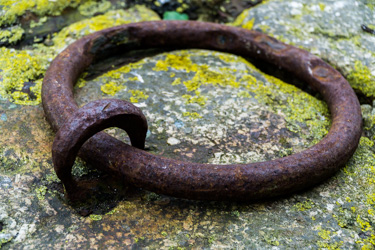With Easter looming and the expected return of vessels to their morrings in the Old Harbour work has been carried out on several fronts – from weeding to welding!
The top of the Old Quay parapet is being prepared ofr re-pointing with the removal of years of vegetation and damage to the existing stonework. In some places, stones on the top of the parapet have been removed – most likley by youngsters thinking it was fun throwing them in the harbour!
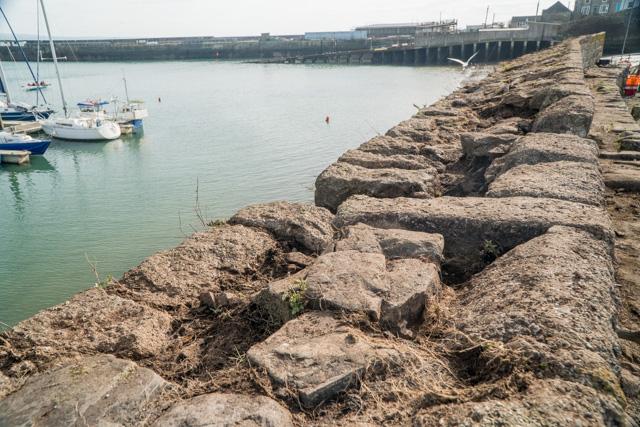
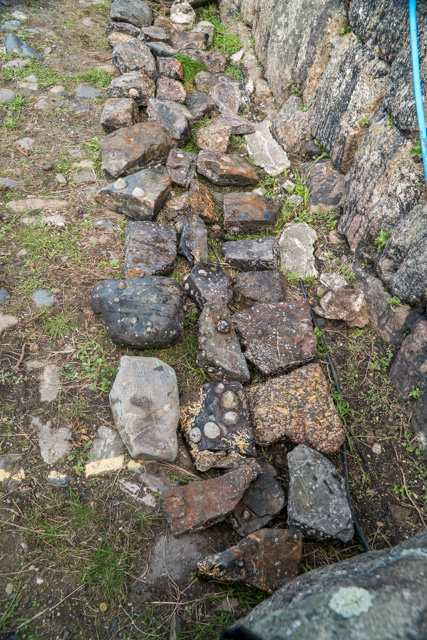
A search was made outside the old quay wall on the sea side and many flat stones were retrieved, inclusing one that has been missing for over 100 years as evidenced by old photos! These and other suitably shaped granite stones are being stockpiled ready to fill in the missing spaces before being fixed in place with granite grit from Castle-an-Dinas quarry after which the surface will be pointed with lime mortar. The work for this being directed by experts from English Heritage and the National Trust stonemasonry teams
The parapet is covered in tar in many places. This came about as the result of the run-off from years and years of spars and masts being treated with a protective covering of Stockholm tar. New pitch, mixed with grit, will be melted and used to repair those areas subject to the most damage to replicate the appearance of the quay centuries of boat repair and maintenance carried out by boats in the past.
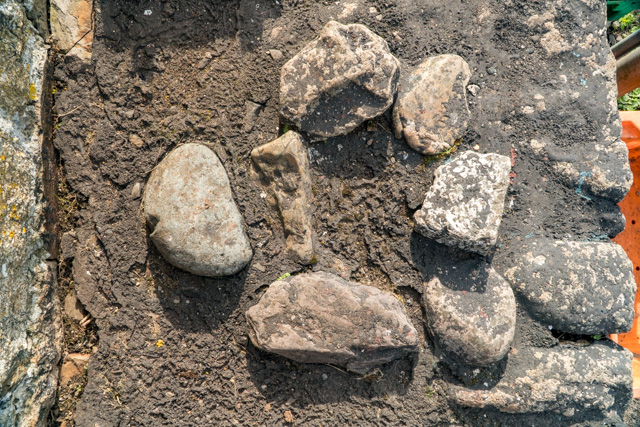
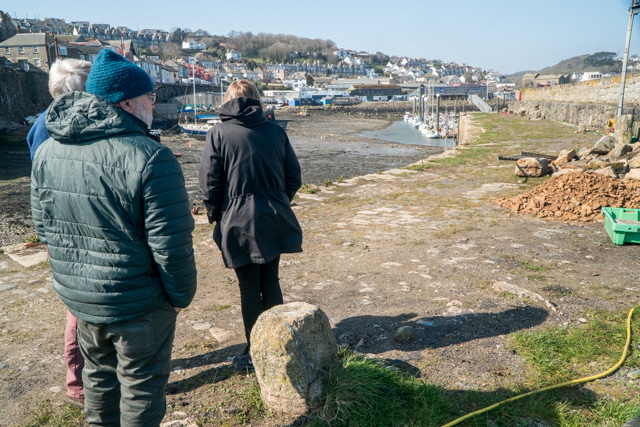
On Tuesday, 18th March, Charlie Johns Archeologist and Louise Whitby, County Council Development Officer for Historic and Environment Planning took the oportunty to get a first-hand look at the work in progress and advise on the next stage of surface restoration.
This raven has been a reguar visitor and is never far from where any work is being carried out – especially any weeding. Ravens are more often than not seen in pairs so we can only hope that a successful liaison is in the making. Legend has it that if the ravens resident in the Tower of London ever leave, the kingdom will fall!
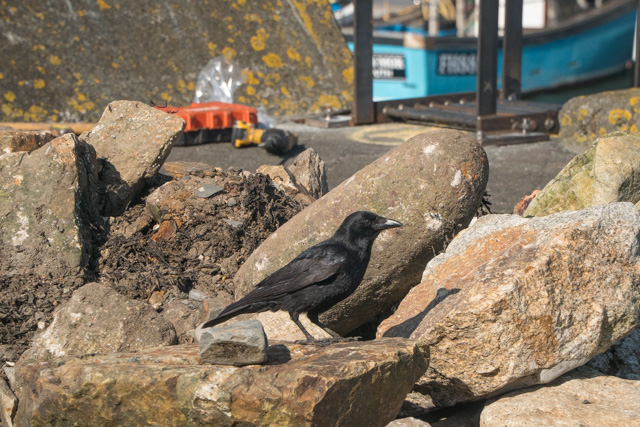
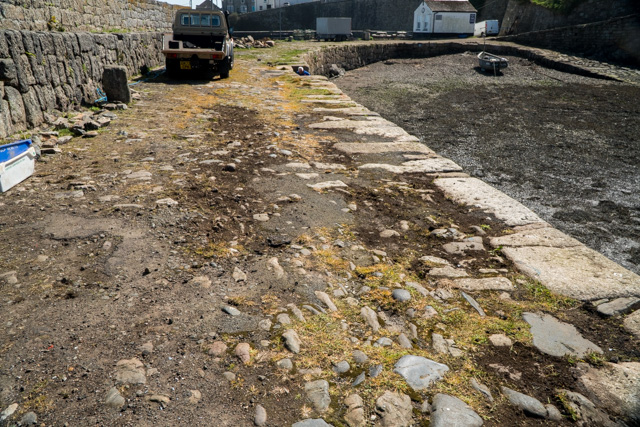
The surface of the old quay is slowly being cleared of weeds and previous repair patches of crumbling tarmac and cement. This will be replaced by a mixture of lime mortar and grit to provide a more stable surface and prevent weed growth in the future ,which caused the surface to deteriorate in the past.
One of the larger edge stones was repaired several times over theyears owing to large crack and was out of place. It needed to be removed so that a replacement stone (taken from the North Pier when it was modified in 1981 to accommodate the new road in front of the harbour offices) can be fitted in its place.
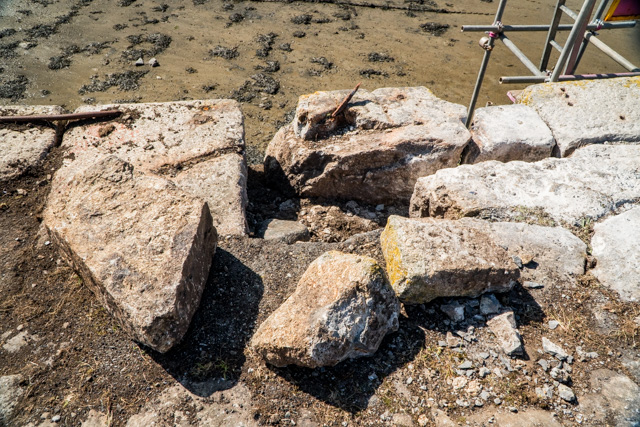
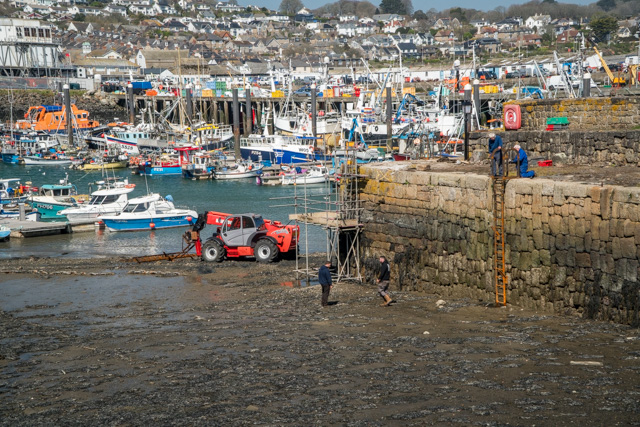
Helping out with the work, the fishing company Waterdance provided the services of their telehandler to assist in removing all three new ladders after they have had their quay brackets fitted in place – they have now removed to be sent away for the application of a protective coating.
In places the seabed of the harbour is softer than others – the trackes left will soon be wshed away after a few tides have come and gone.
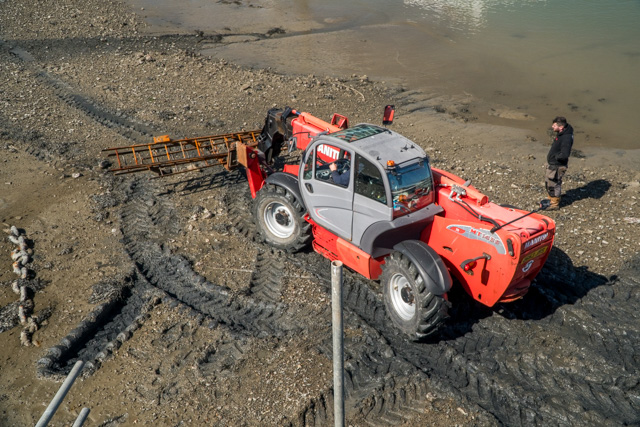
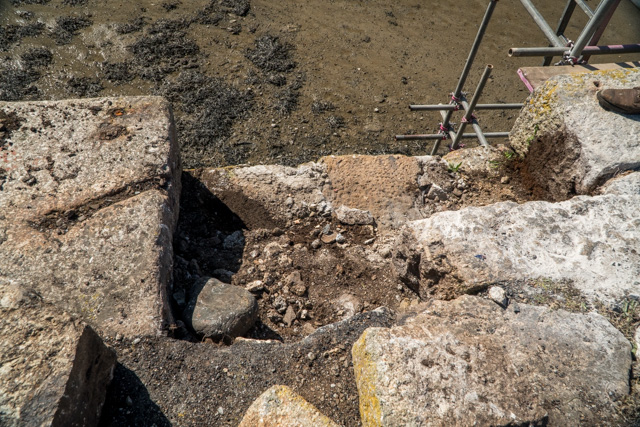
The damaged granite edge stone was removed allowing for the surface underneath to be cleaned and prepared in readiness for the arrival of its replacement.
The weight of a granite stone can be calculated by its size. A rough guide equates to 170lbs per cubic foot. The replacement block, weighing in at a calculated 1.1 tons, meant that the course taken by the telehandler was navigated with care!
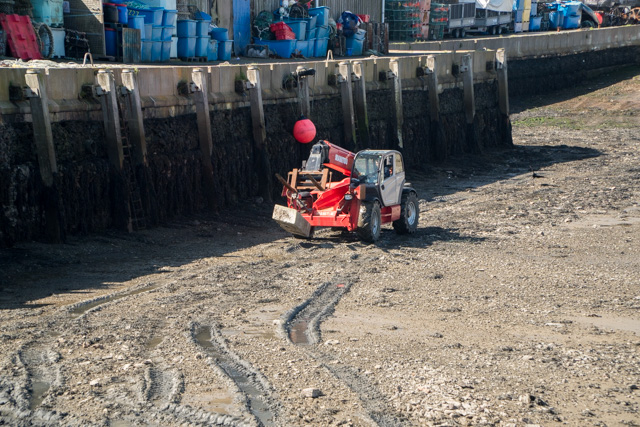
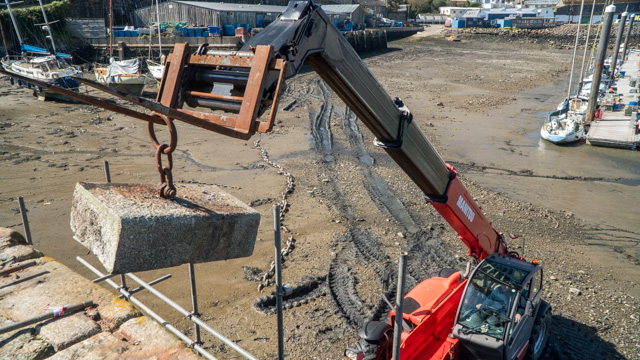
Back in the day when the quay was built, a horse team and cart would have deleivered stone from a local quarry and ‘A’ frame cranes would have been employed to lift and position the stone inplace. Today’s technical advances means that this job can be carried out by a single machine.
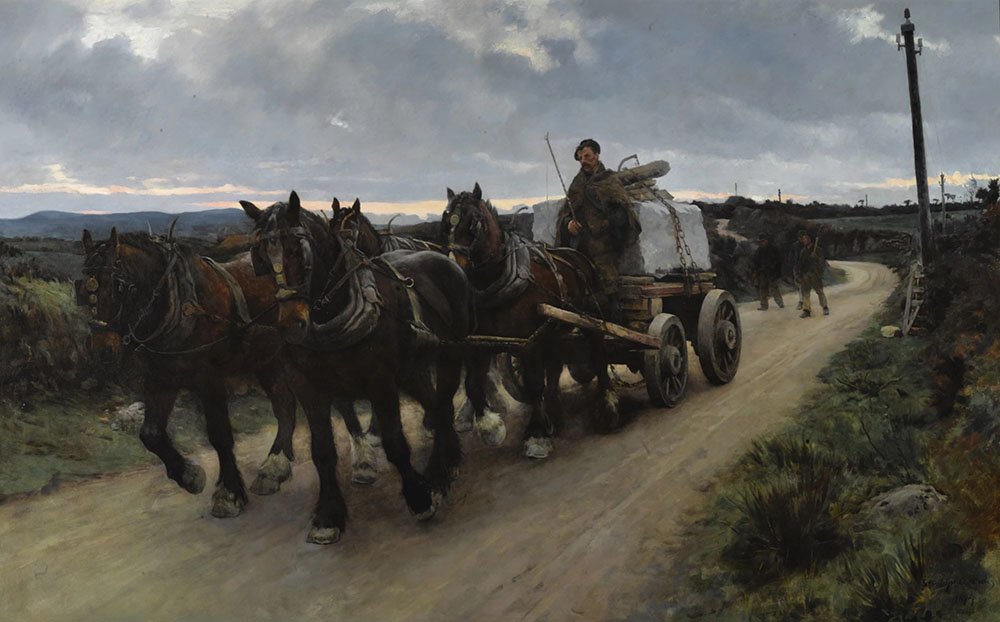
Stanhope Forbes captured such a scene in one of his most famous works, The Quarry Team’. Some history behind it can be read here by one of Newlyn’s most loved artists, Bernard Evans – who captured much of the fishing industry on canvas during the course of his creative lifetime. The painting hung for most of the 20th century in Treneer Manor (now part of Penwith College) – the outline of the frame can still be seen on the wallpaper above the fireplace in one of the front rooms in the manor!

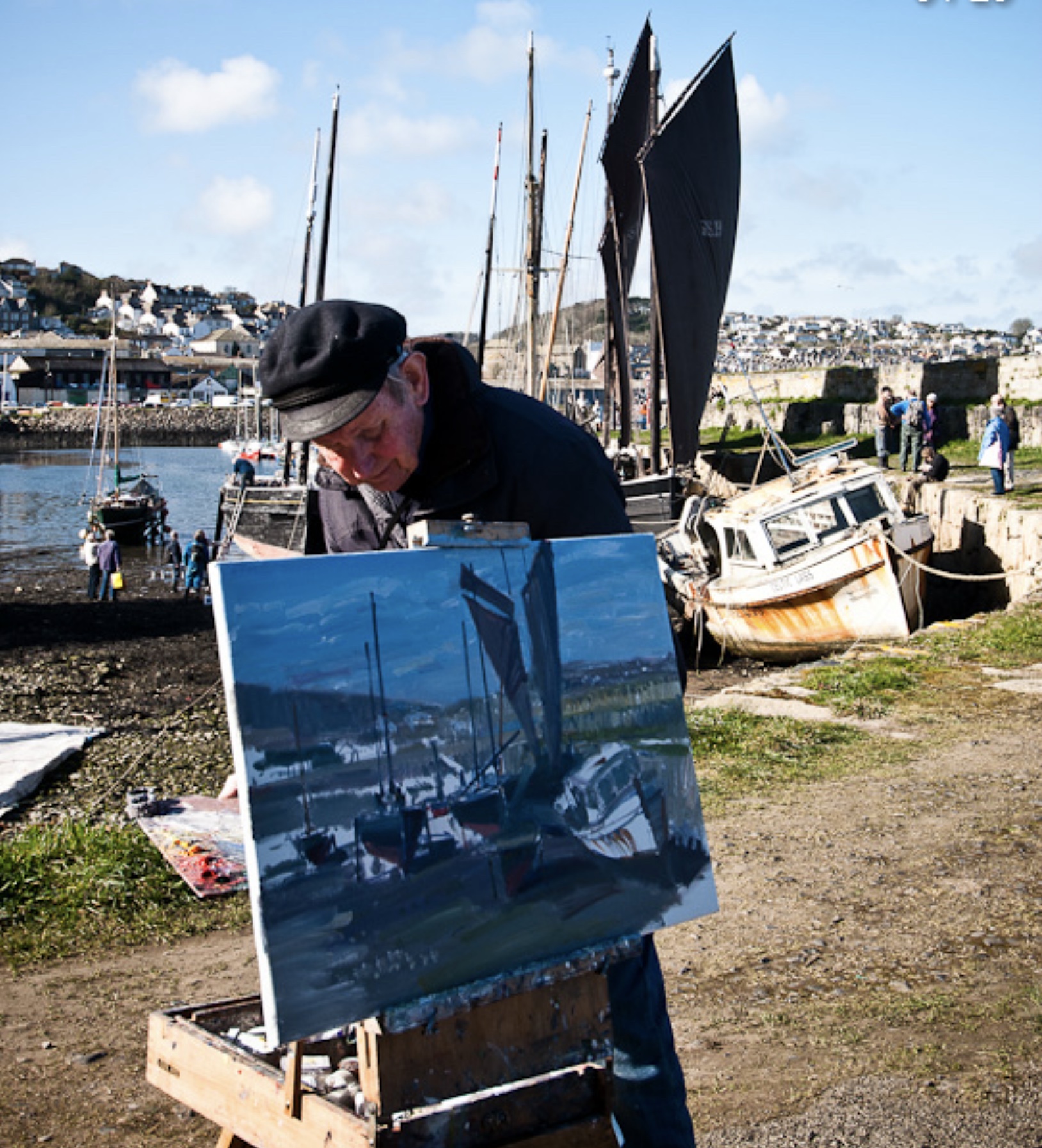
Here is Bernard Evans in 2012 sporting his familiar Breton fishermen’s cap during the last Lugger’s Painting Day with his depiction of the Barnabas, Happy Return and Ripple. It was probably one of the last times he was out and about to enjoy painting in the harbour.
Once the restoration work has been completed this and other scens involving the local luggers and other historic vessels will become a familiar sight as the old quay once more becomes a hive of historical activity!
